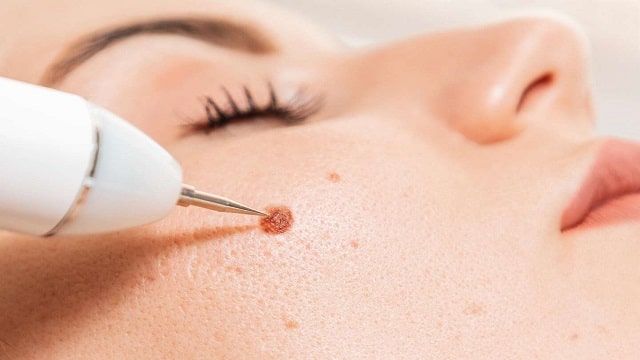Cauter
Cauterization is a medical procedure that uses heat to burn a body part to stop bleeding or remove tissue.
This technique can stop bleeding using a heat or electrical source, which is useful for closing the wound and blood vessels in and around it and removing dangerous tissue.
Alternatively, chemicals may also be used in this procedure, especially to remove certain abnormal tissues, such as warts.
Cauterization can be a routine procedure but is not a first-line treatment. This is because it is only performed in certain situations.
Benefits of Cauter
There are several benefits of this medical procedure, namely cutting or destroying body tissue, and stopping bleeding.
In addition, cauterization can also be used to remove unhealthy tissue, such as warts or moles that have the potential to become skin cancer.
In addition to cauterization, learn about other medical procedures to remove unhealthy tissue.
In some cases, cauterization may also be used to reduce pain or control infection.
However, the use of cauter must be carried out carefully by trained medical personnel to avoid complications or further damage to the surrounding tissue.
Cauter Risk Factors
Cautery procedure has several risk factors that need to be considered before it is performed. One of the main risks is infection in the treated area.
Although cauterization is often performed under sterile conditions, there is still a possibility of infection, especially if the equipment used is not sterile or if the patient has a health condition that weakens the immune system.
In addition, there is also a risk of burns to the skin or surrounding tissue due to the heat generated during the cauterization procedure. Damage to surrounding tissue can occur if the cauterization is performed too deeply or for too long.
Other risk factors include allergic reactions to the chemicals used in cauterization, as in the case of chemical cauterization. Some people may also experience pain or a burning sensation during or after the cauterization procedure.
In addition to the risks directly related to the procedure itself, there are also risk factors related to the patient’s health condition.
For example, patients with blood clotting disorders may be at higher risk for bleeding after a cauterization procedure.
Additionally, other medical conditions such as diabetes or heart disease can also increase the risk of complications during the cauterization procedure.
Purpose of Cauter
There are several purposes for carrying out this action, including:
1. Blood Loss
Cauterization is believed to help control blood loss due to several situations, such as surgery, tooth extraction, chronic nosebleeds, or after an injury.
It works by burning the bleeding blood vessels. This can close the area so that the bleeding is reduced or even stopped.
2. Treat Infections
Cauterization can reduce the risk of infection. This method is used to remove diseased tissue, as well as prevent the spread of bacteria that cause infection. That way, bigger problems can be prevented.
3. Treat Tumors
Cauterization can also be used to remove abnormal skin growths, such as warts, skin tags, and tumors. This method can destroy and remove the skin, depending on the lesion or tumor.
When to Perform Cauterization?
This medical procedure is mainly done to remove abnormal skin tissue growths, especially benign ones. The doctor will recommend this procedure so that this skin problem can be stopped.
Call your doctor or go to an urgent care clinic if you experience signs of skin irritation, such as increased pain, redness or swelling of the skin, heat or warmth to the touch, or pus or yellow fluid.
Cauter Procedure
This medical procedure generally takes about 30 minutes. For larger or more severe skin problems, it may take longer. During cauterization, the following procedures are performed:
- Initially, the doctor examines the area to be treated.
- Blood tests may be needed to check for blood clots and anemia.
- After that, local anesthesia is given.
Once the anesthesia has taken effect, the doctor uses a tool coated with a certain chemical to provide treatment to the desired area.
This procedure can cause the blood vessels to melt and join together. This can stop the bleeding and remove excess granulation tissue. This method can also minimize the risk of infection.
After the procedure, the doctor also applies the same chemical to the treated area. This is useful to prevent excess tissue growth in the future.
Where to do Cauterization
This procedure is usually performed in a hospital or clinic that provides the service. It is best to choose a place that is certified and handled by experienced medical experts.

